Every year, LG has delivered an excellent performance with its OLED TVs. From the C9 (review) which kicked off the HDMI 2.1 era on TVs to the LG CX (review) which was the first 48-inch OLED TV targeted at gamers, today we have with us the LG C1. The TV is a part of LG’s 2021 portfolio of OLED TVs and brings some much-needed changes to the UI, some interesting gaming features and an all-new remote control. It has four HDMI 2.1 ports for your gaming needs. Is it still the best gaming OLED money can buy?
LG 55-inch C1: Key specifications at a glance
Panel Size: 55-inch (available in 48, 65 77 and 83-inch screen sizes)
Panel Type: OLED
Panel Resolution: 3840 x 2160 – 4K
Panel Refresh Rate: 120Hz
HDR 10 Support: Yes
HDR 10+ Support: No
Dolby Vision Support: Yes
Weight (with stand): 41.6 kgs
HDMI Ports: 4
USB Ports: 3
Bluetooth: Yes (v5.0)
Wi-Fi: Yes
Ethernet: Yes
Speakers: 40W (2.2Ch)
Price (MOP): Rs 1,49,999 for the 55-inch
LG 55-inch C1: DISPLAY AND PICTURE QUALITY
The LG C1 is an OLED TV and in our Calman analysis, we recorded a peak brightness of about 750 nits on the TV which is very good. The TV has a fairly colour accurate display and, in the Cinema, preset we got an average delta error of 1.4 which is incredibly low and a good thing. Even in the ColorMatch HDR we got an average delta error of 1.66 which is also very low. The colour reproduction of the TV out of the box is very good for both HDR and SDR content consumption.
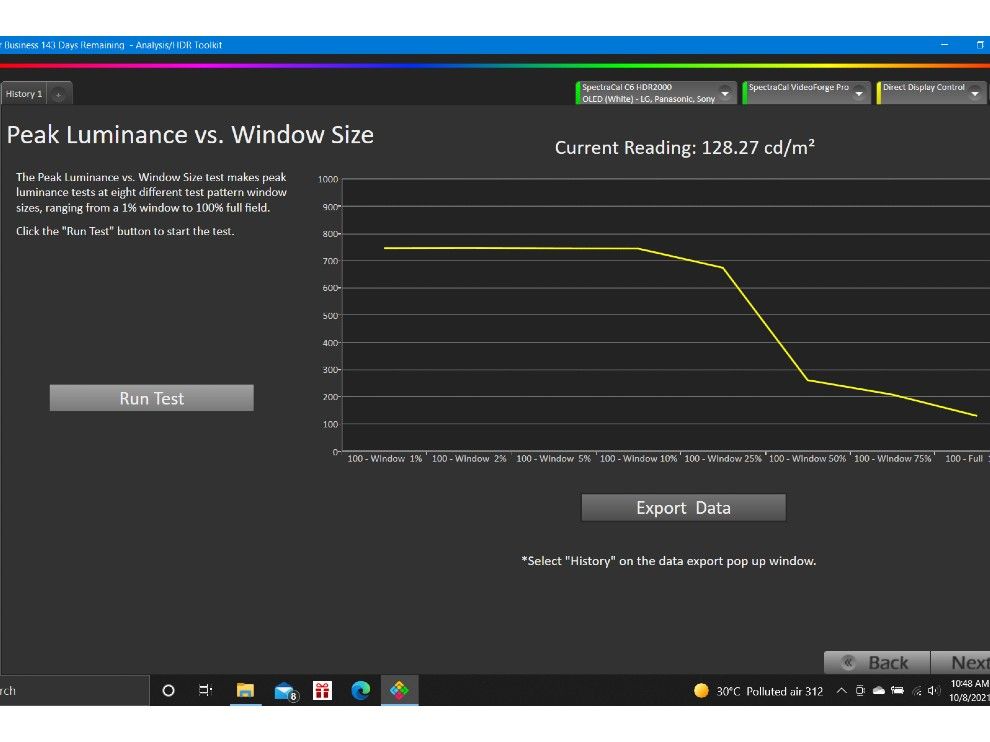
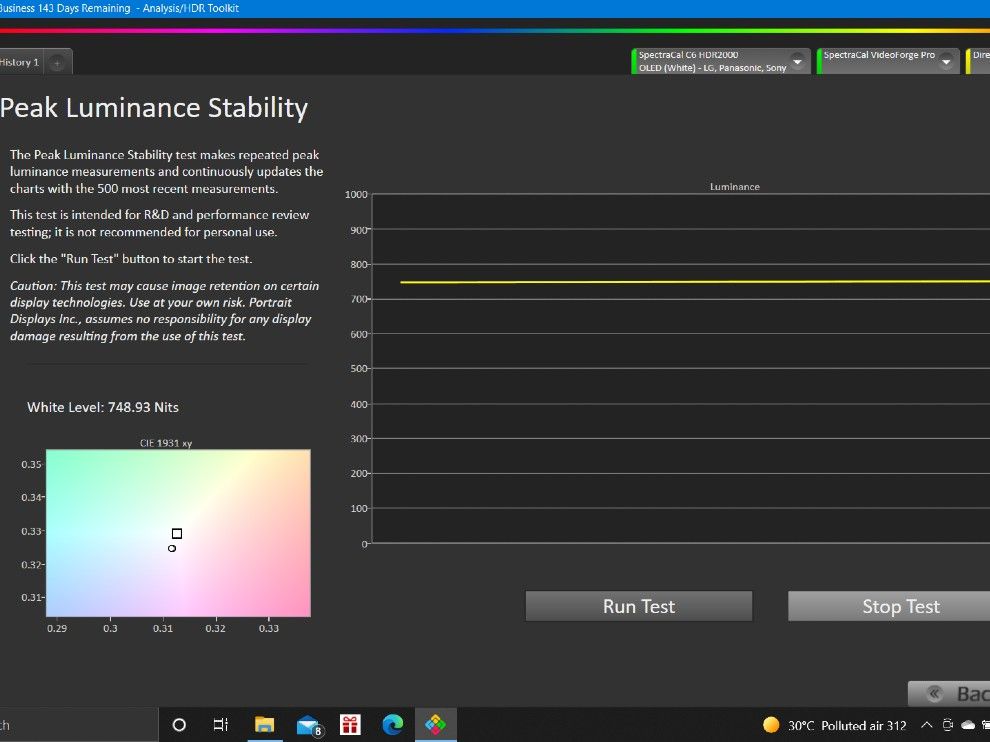
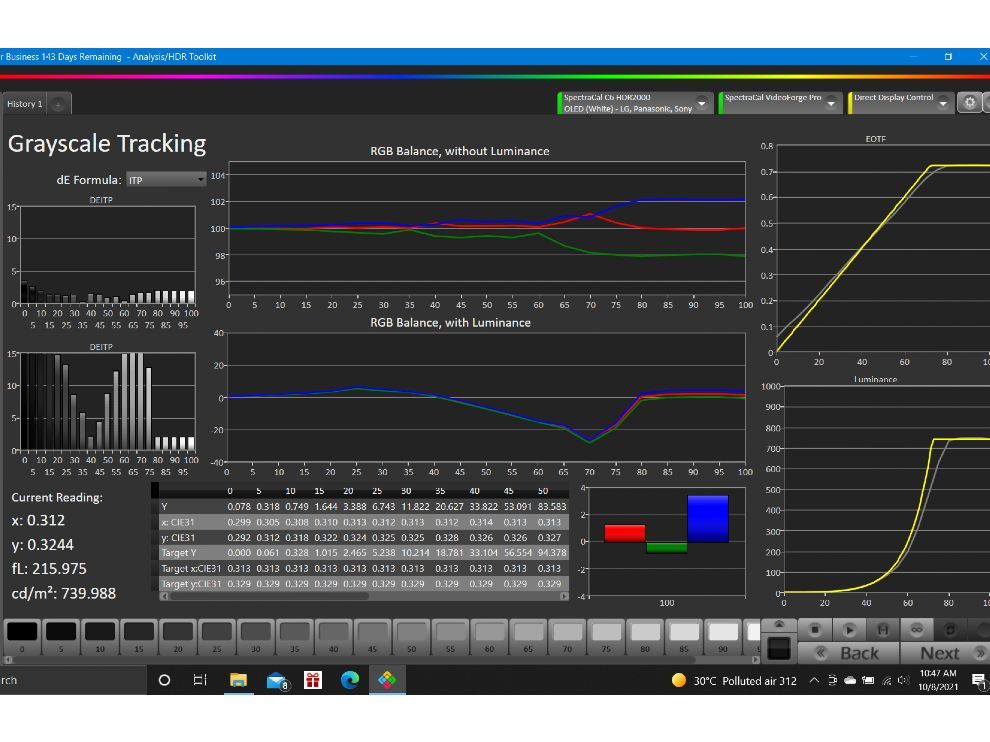
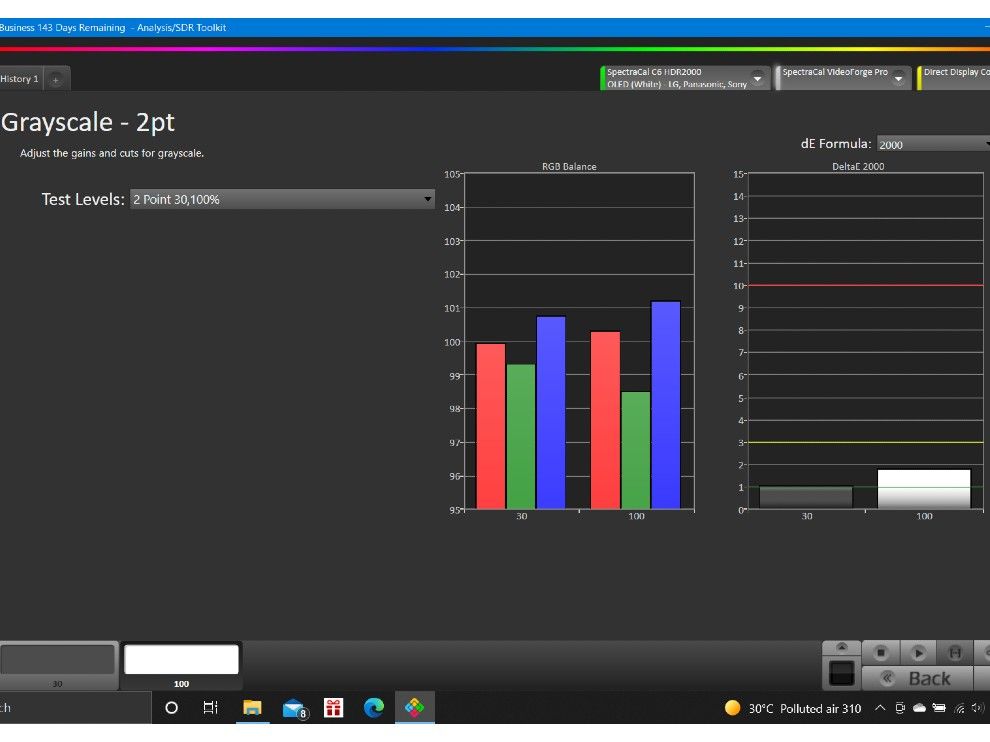
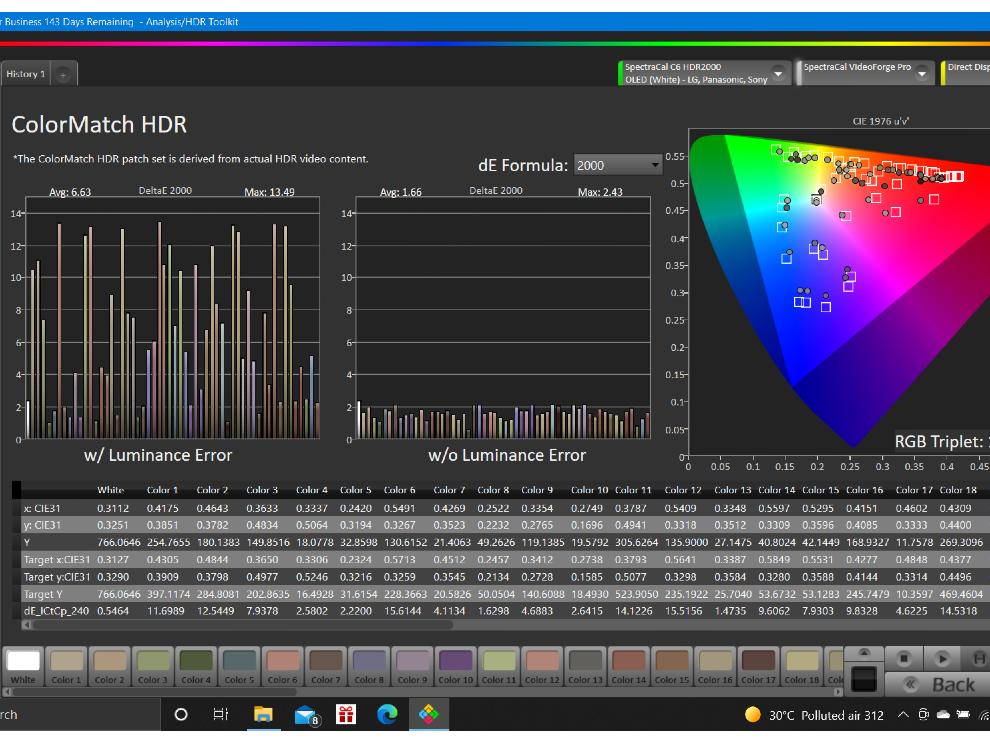
LG 48-inch CX: 4K and HDR Performance
LG’s OLED TVs have offered some of the best performance money can buy, and the case is no different here. We saw our standard slew of HDR content on Netflix and Prime Video. The TV supports HDR 10, HLG and Dolby Vision including Dolby Vision IQ but does not support HDR 10+. With self-emitting backlighting, we get an infinite contrast ratio on this TV and the colours on the OLED look deep as ever. When it comes to HDR performance, the TV is sublime. We got some of the best colours and colour accurate performance from this TV which can rival the likes of the Sony X90J (review). In a show like Our Planet, the colours just popped. Even animated content has depth and vibrancy in colours. While an OLED panel can get reflective in a well-lit room, it is in a dark room that the performance of this TV really shines with absolutely no form of hallowing or blooming appearing on the display.
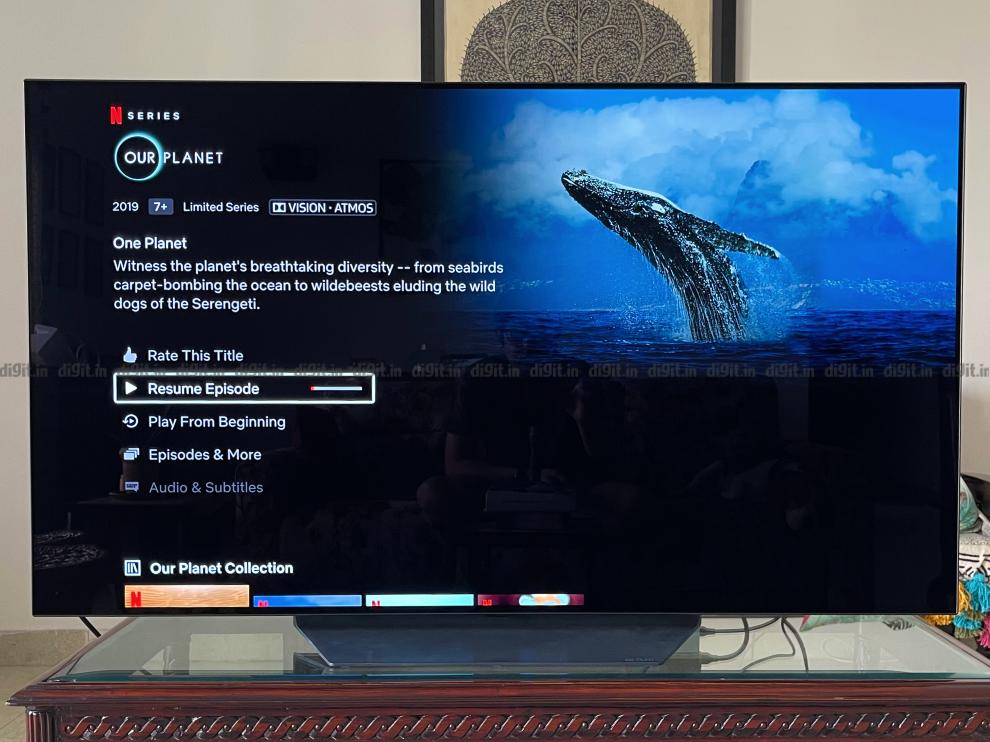
I have the same qualm here with the Disney+ Hotstar app as I did with the LG CX and that is the lack of Dolby Vision and surround sound support. The feature is available on Disney+ Hotstar on budget Android TVs and it is high time we get support for it on the LG OLED TV as well.
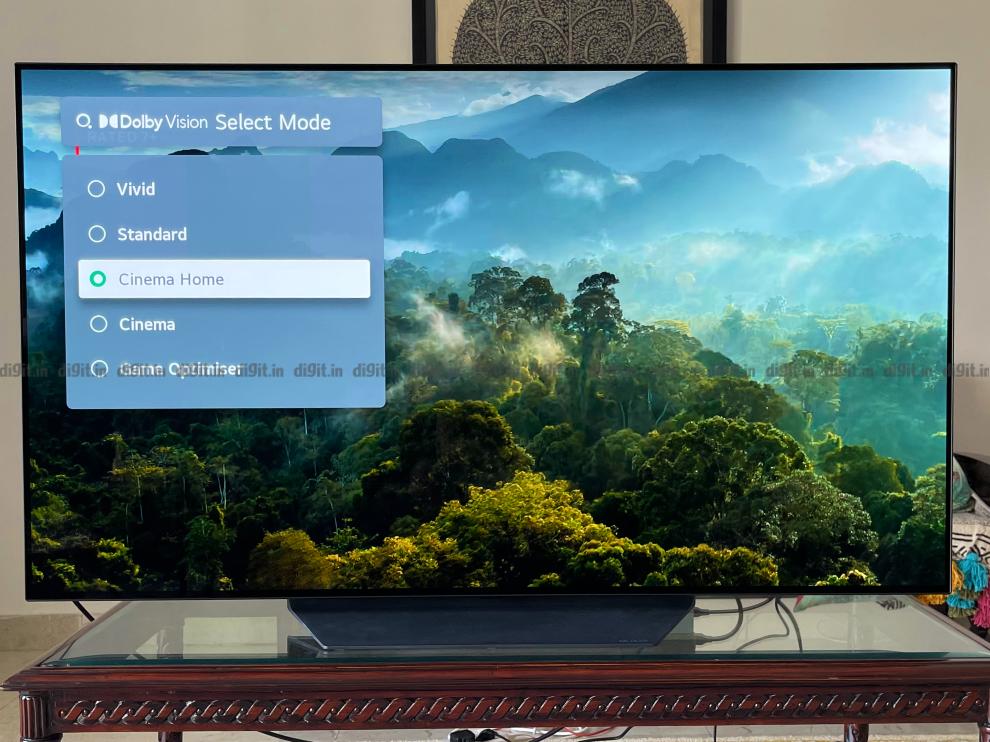
Long story short, HDR content looks fantastic on this TV, with bright highlights, and very good colours. You are paying for premium performance here and that’s what you get.
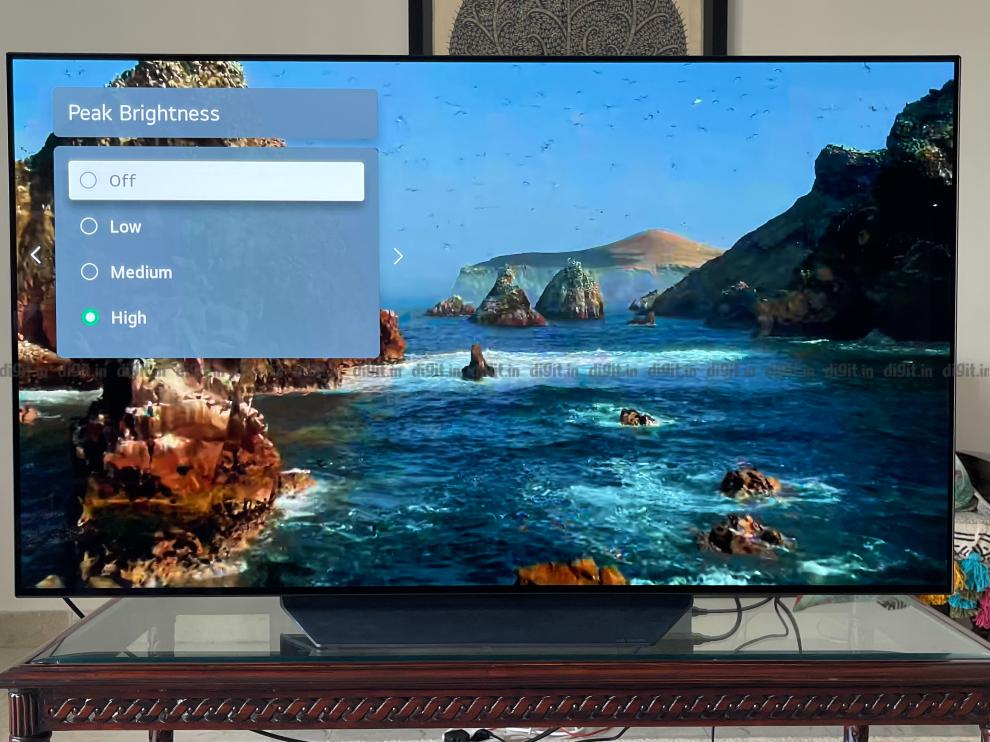
LG 55-inch C1: SDR Performance
When it comes to SDR content, the overall performance of the TV is very good. Some people may complain that the SDR content looks slightly dim on this TV and that’s possibly due to the SDR peak brightness of 125 nits. While this is bright enough some may want a more Vivid image. Thankfully, the Vivid preset does just that! It bumps up the colours and even the brightness of content to give you a more enjoyable experience. This may not work for all types of content. There are shows like Young Sheldon where the Vivid preset works extremely well and some cases where the content looks oversaturated. Switching to the Standard or Cinema preset here helps a lot.
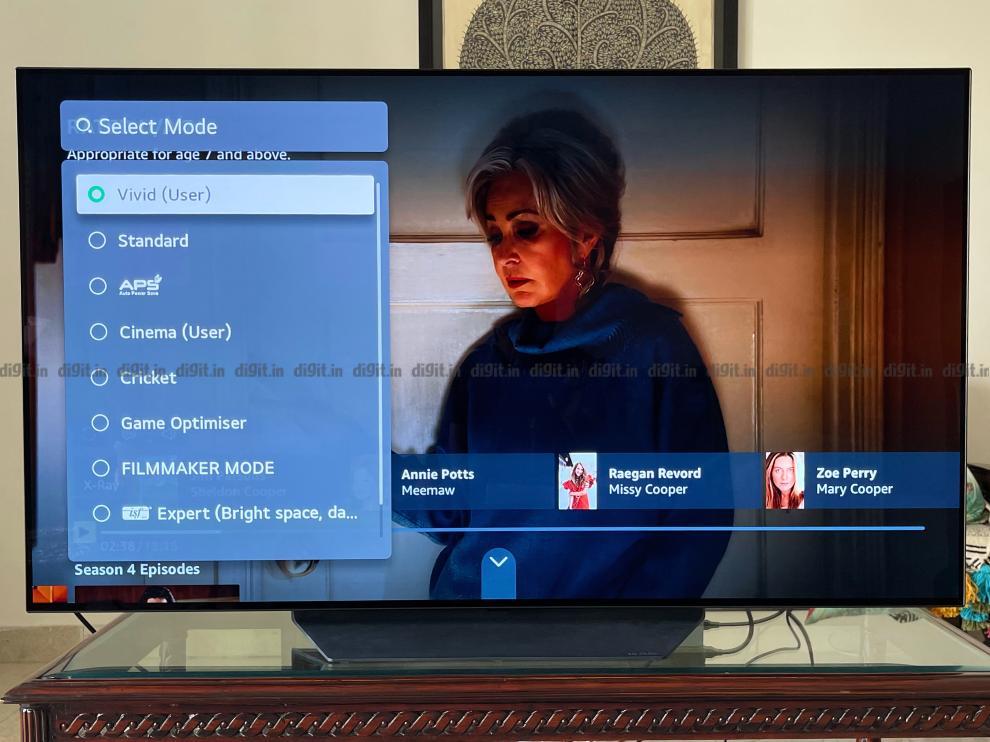
LG 55-inch C1: Gaming performance
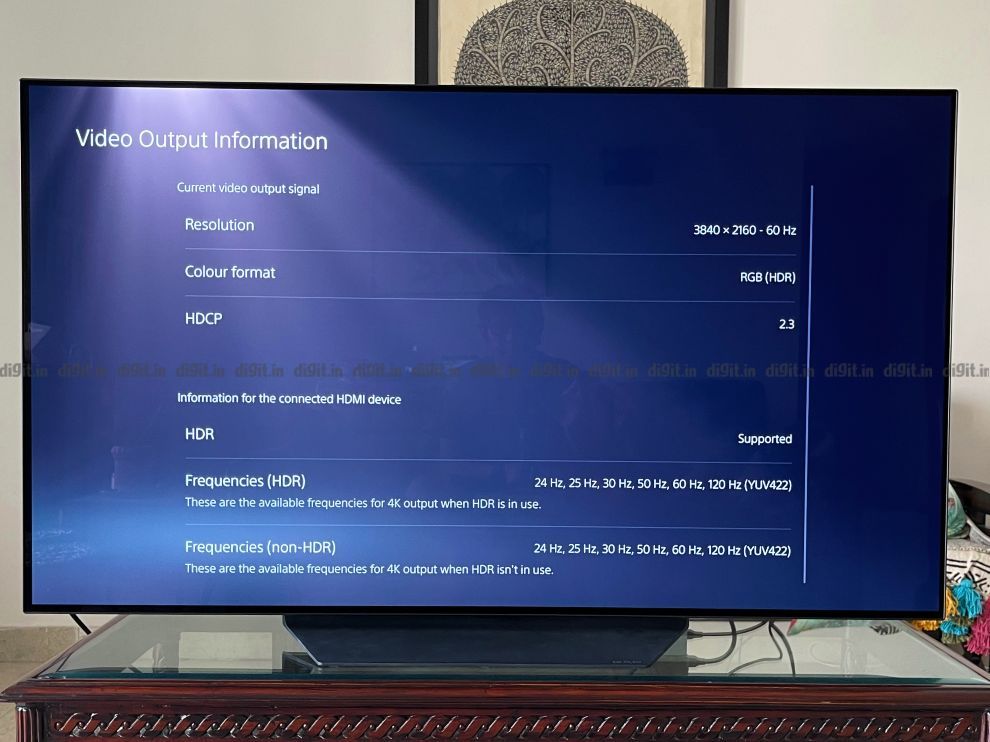
The LG C1 has all four HDMI 2.1 ports with support for ALLM (Auto Low Latency Mode), VRR (Variable Refresh Rate), 4K at 120Hz, G-Sync and Free Sync support. If you are rocking an Xbox Series X (review), PS5 (review) or even the RTX 30 series GPU then, you can take full advantage of what the TV has to offer. LG has made some changes to the gaming UI of this TV. Pressing the settings button when in Game Mode no longer brings up the settings on the left side of the TV. You get this vibrant purple UI at the bottom of the display giving you information like FPS, black stabiliser, Low Latency, VRR, etc. The TV has different settings for different game modes and you can toggle the game modes from this UI. It has Standard, RTS, FPS and more modes to choose from which changes the settings to suit the game on the screen. For the most part, I found Standard to get the job done very well.
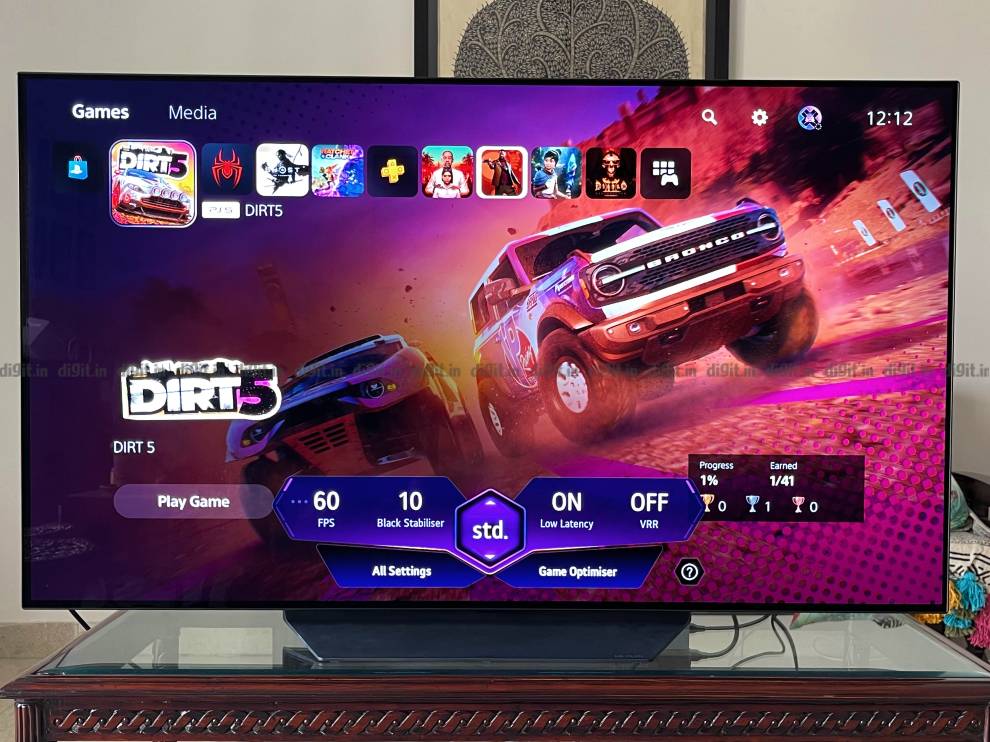
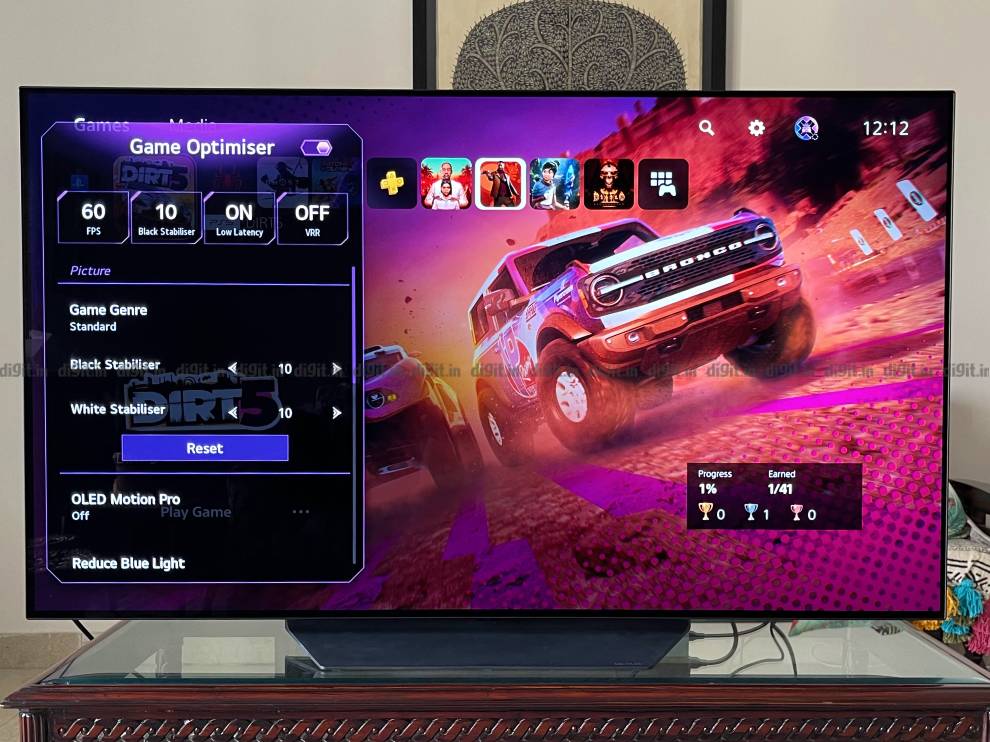
We connected a PS5 to the TV to check out its gaming performance along with a few games that support a high refresh rate, like Dirt 5 and Ratchet & Clank. When we fired up these games in their 120Hz modes, the UI immediately recognized the high refresh rate of these games and displayed the same on the UI, very seamlessly. Unlike previous LG OLED TVs, the HDMI Ultra HD Deep colour was switched on automatically when the TV recognised the PS5 and we got full RGB HDR with support for 4K at 120Hz.
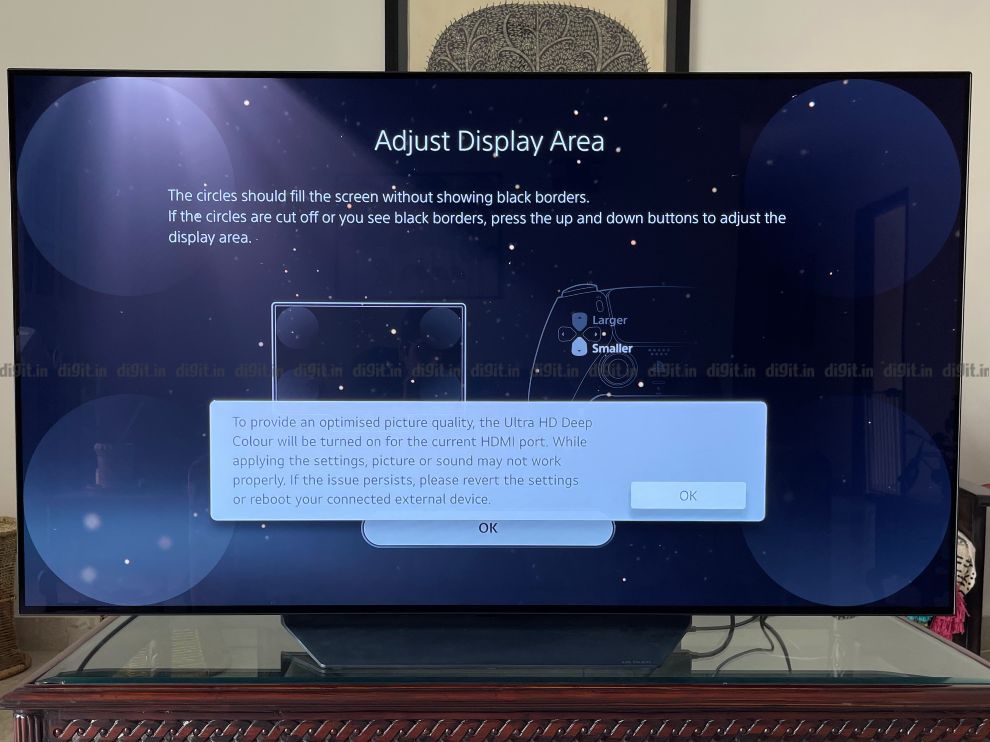
All the games we played on this TV, be it Ghost of Tsushima (review), Deathloop (review), Spider-Man Miles Morales (review) and many more looked fantastic with deep blacks, vibrant colours and immensely immersive. If you are looking for a TV for the penultimate gaming experience, then you can consider the LG C1 hands down. Apart from being reflective in a very well-lit room, there are no coms I can think of why this shouldn’t be your next gaming TV. Sure, OLED TVs may still have the risk of burn-in, but if you vary the content you consume, then it shouldn’t be a problem.
LG 55-inch C1: Audio Performance
While the picture performance of the LF C1 is sublime, the one place it suffers slightly is with its audio output. The LG C1 has a 2.2 Chanel set up with 40W of sound output, just like its predecessor. If you plan to use this TV in a small bedroom, then the output from the TV should get the job done for watching movies and playing games. The speakers on the TV support Dolby Atmos, but don’t expect the sound to surround you from all angles. But placed in a living room, you will miss the bass in the bangs and thuds. While dialogues and background scores are easily audible, the distinct lack of channel separation is missed especially when we watch a movie like Ready Player One which has all the cars whizzing around the screen.
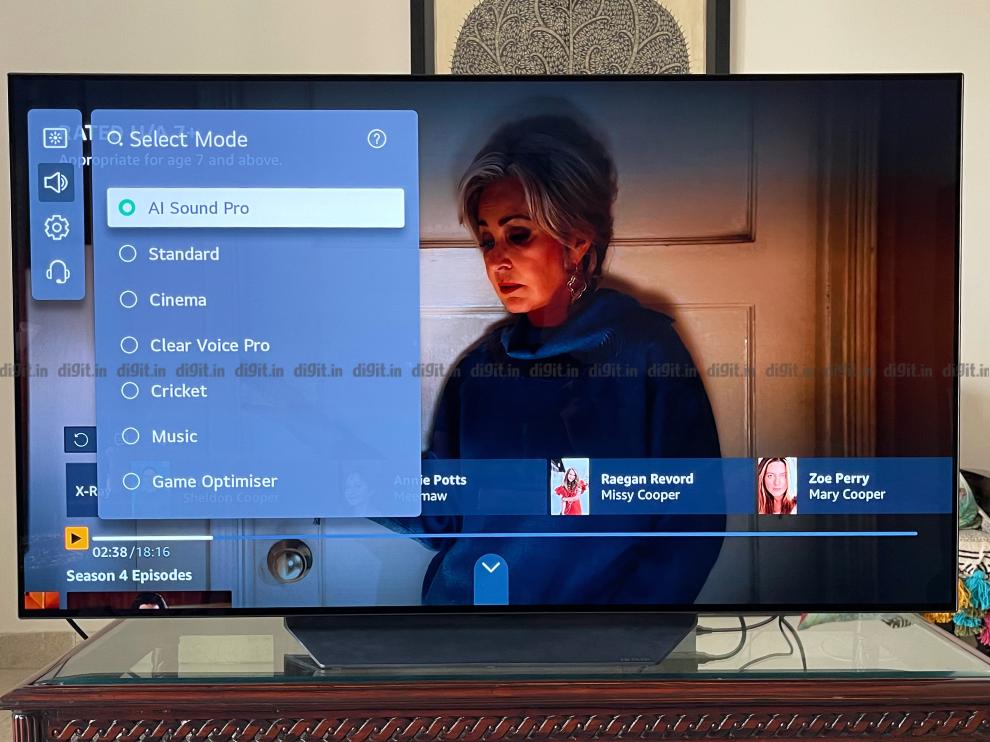
LG C1: UI
One of the biggest changes to the LG C1 is the UI of the TV. LG announced the new UI at CES 2021 and we finally have it in action on the C1. We no longer have the rectangular tiles occupying the bottom of the display. Instead, the new UI takes up the entire screen. The first page of the UI is filled with content suggestions, smart capabilities and tips and tricks. Then we have a row of apps, sources, and the home dashboard. Below that have content suggestions from various streaming services.
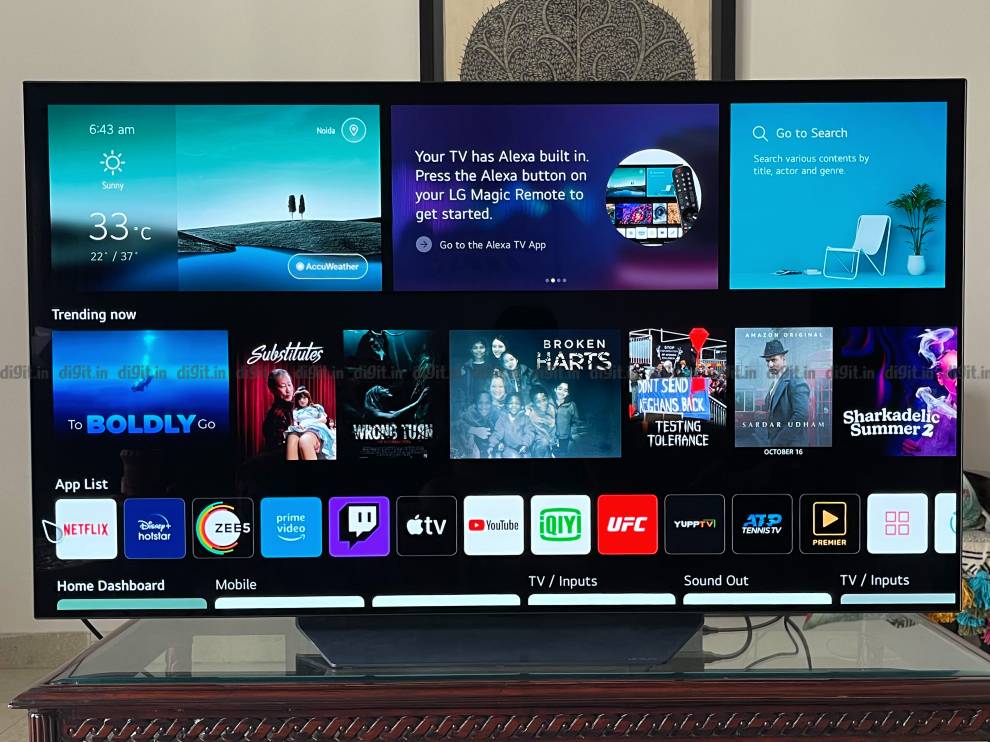
The TV still comes with a magic remote and the settings have been shuffled around a bit and in my opinion for the better. They are easier to navigate when compared to the C9. The colours of the settings have also changed from pink colour to grey giving it a slightly more mature look.
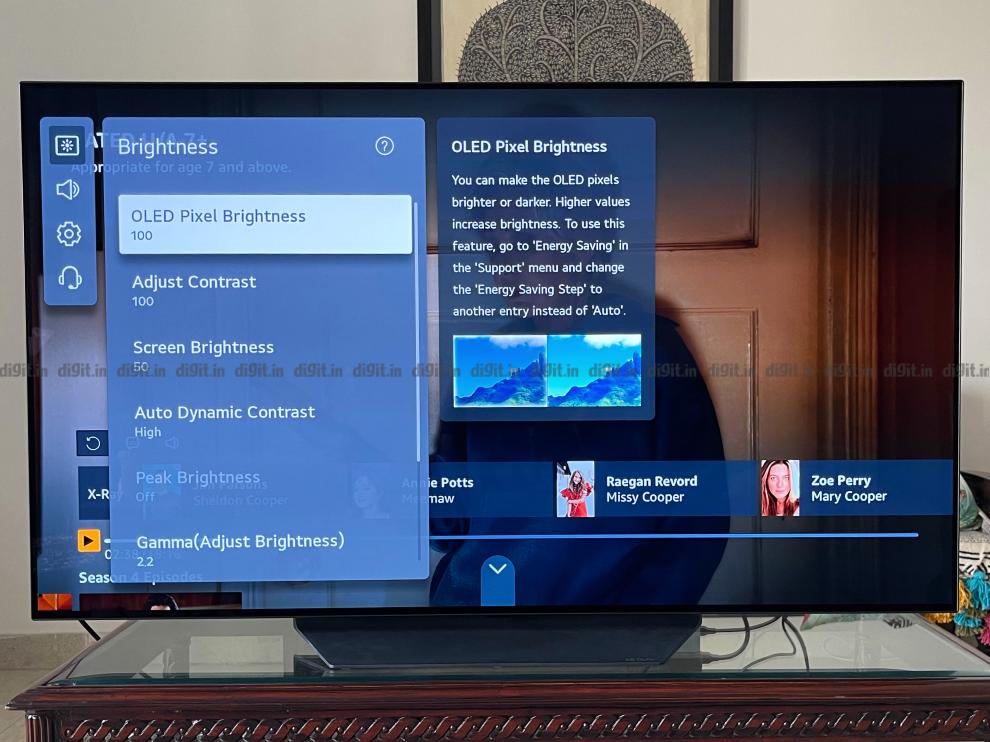
The only con with the UI is in the previous version, one could seamlessly switch between streaming services by pressing the home button and bringing the row of apps at the bottom of the display without leaving the current app. In the new UI, pressing the home button takes you full-screen home UI rather than bringing up the app switcher. It would be great if there was an app switcher in the UI just like the previous version of WebOS but this is a really small niggle in the grand scheme of things especially when you consider the overall changes to the UI.
LG CX: Remote control
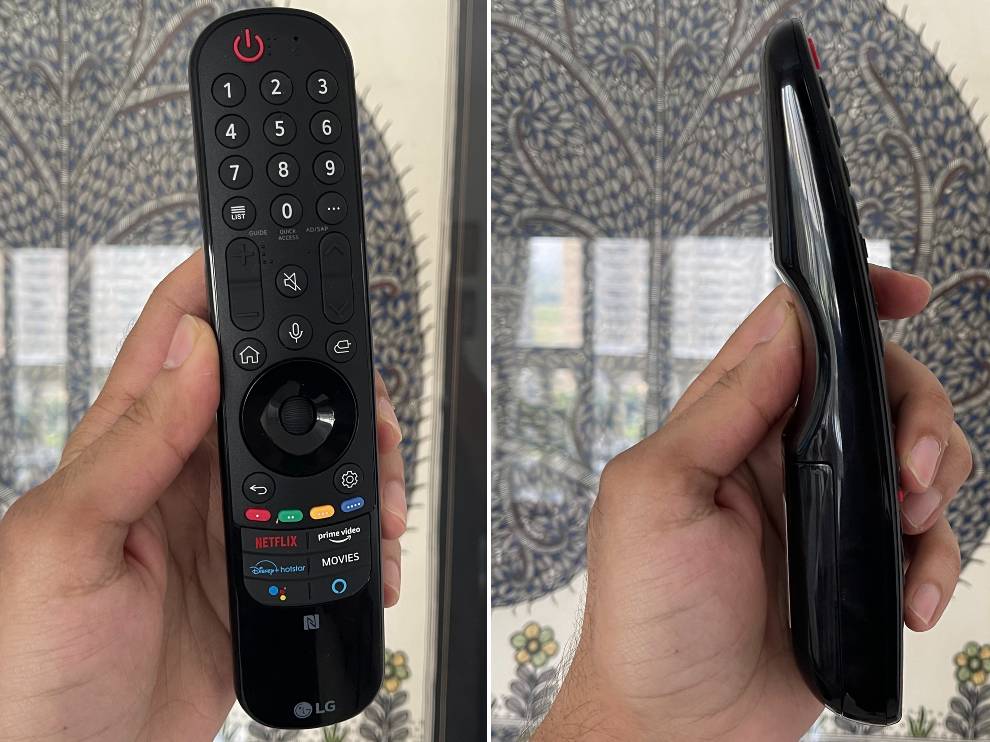
LG has redesigned the remote control that you get with the C1. When compared to the remote you got with the CX, you can see a lot of things have changed for the better. The new remote control feels slightly less weighty at the bottom making it more ergonomic to use as a magic wand with the TV. Another change which is very good is that the volume button and the channel buttons on the new remote control are a single toggle making it easier to use. Small change, but definitely worth it. It also has more squarish edges rather than rounded edges and I like the new design. You also have more OTT hotkeys and slightly bigger buttons at the bottom which includes Netflix, Prime Videos and Disney+ Hotstar. You also get dedicated buttons for Google Assistant and Amazon Alexa. The scroll wheel is slightly depressed making it easier to use. Overall, a move in the right direction. There are two improvements I wish LG still made in their TV remote control. The first is that the tracking wheel only scrolls vertically. I wish it would scroll horizontally as well making the UI navigation more seamless. The other thing that I miss is that the older remote had a play and pause button and it worked across all OTT apps. The absence of the dedicated play and pause button is severely missed on the new remote control.
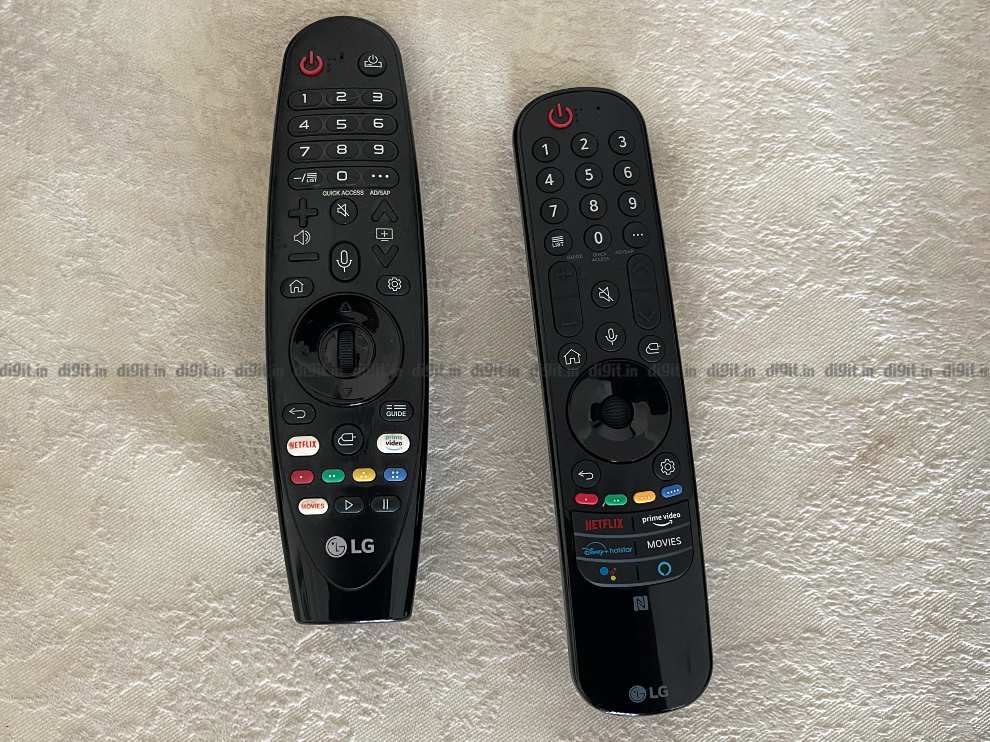
Left: Old LG Magic remote. Right: New LG Magic remote.
Overall the remote control is a move in the right direction. Maybe next year LG turns the trackwheel into a ball and adds the play and pause button. The remote control also has an NFC chip. You can simply tap your smartphone to the remote control and be able to cast onto the TV which is also a great option.
LG CX: Build and Design
LG has gone with an “if it ain’t broke, don’t fix it” with the design of the C1. Placed next to a C9, you wouldn’t know which TV is which. It has a long tabletop stand that holds the TV in place from the centre when kept on a tabletop. We have the LG B9 stand for this review due to logistical reasons, but the stand you get with the C1 is the same as the CX and the C9. The tabletop stand is angular and looks premium.
The panel of the TV is extremely slim, with almost no bezels surrounding the display. It is slightly thick towards the bottom, where you have the components and connectivity options.
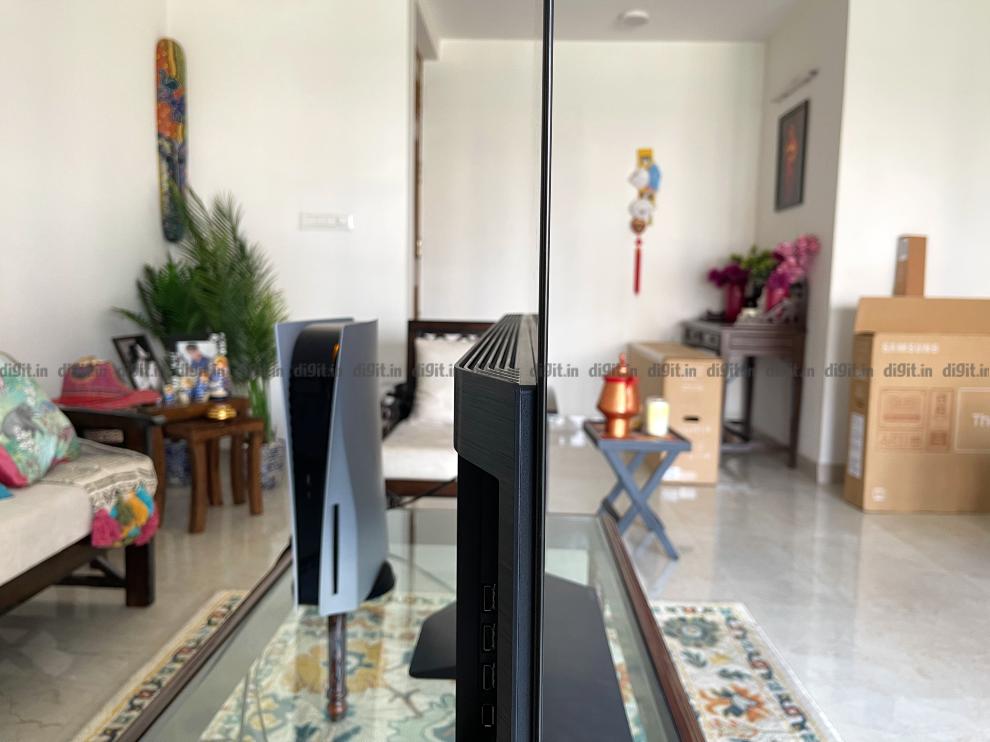
Speaking of connectivity options, the TV has three HDMI ports and one USB port facing the side. Facing the back, we have one HDMI port, two USB ports, AV in, LAN, optical port, 3.5mm port and a good old antenna.
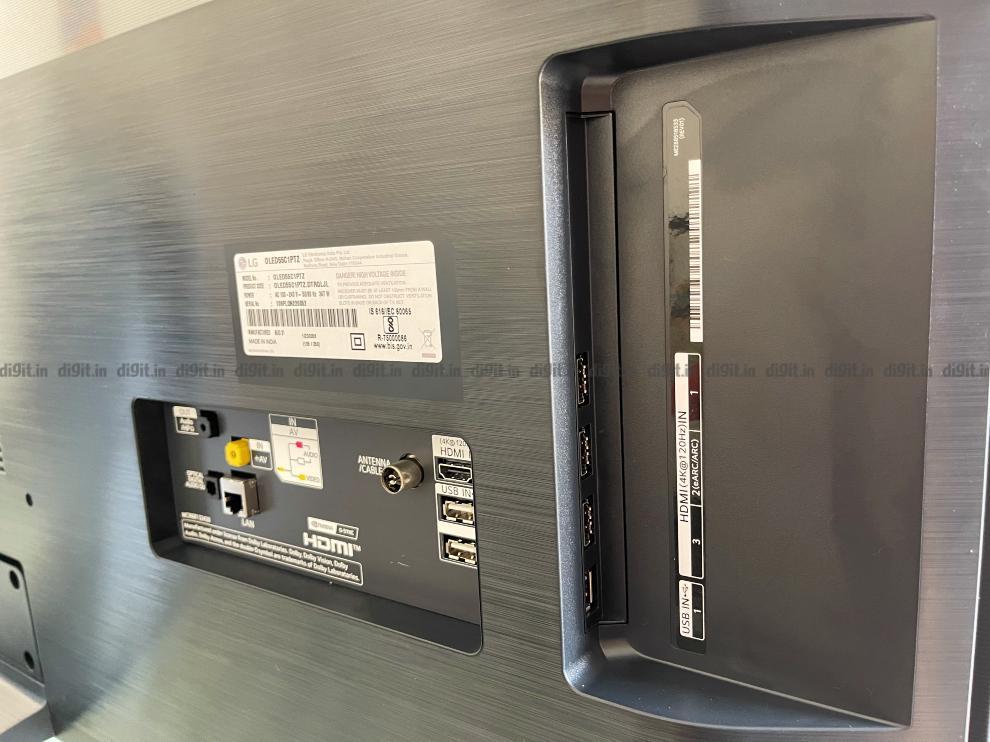
Bottom Line
The LG C1 is a fantastic OLED TV and lives up to the legacy LG has set with its C series OLED TVs in the past few years. It has fantastic performance for HDR and SDR content and can get quite bright for HDR content. It has four HDMI 2.1 ports making it the ideal gaming TV. Its performance for gaming along with the new gaming settings UI is fantastic. Sure, OLED TVs have the risk of burn-in, but I think if you vary the content a bit, you should be OK. The TV is extremely slim and the design is the same as its predecessor. The new UI and remote control are a welcome change and an evolution in the right direction. The audio output from the TV is average and works well for a small room but for a cinematic content consumption experience, I highly recommend investing in a soundbar. As of writing this review, the LG C1 55-inch is priced at about Rs 1,50,000 but if you look for it offline, chances are you can get it cheaper. We have seen the 48-inch variant of this TV sell for around 95K online making it a great option for those looking for a premium 50-inch TV. In terms of its competition, we have the Sony X90J priced close to the C1 and can be one to consider if you are sceptical about getting an OLED TV. We also have the 55-inch TCL C825 (review) priced at about Rs 1,08,000 if you are in the market to give a Mini LED TV a go. Both the TCL C825 and Sony X90J have only 2 HDMI 2.1 ports when compared to the C1. Overall, the C1 is a fantastic option if you are looking for a premium cinematic content consumption experience and the ultimate gaming TV.
Fuente: Digit
